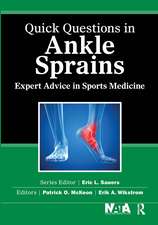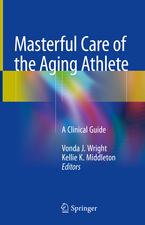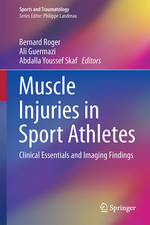The Plasticity of Skeletal Muscle: From Molecular Mechanism to Clinical Applications
Editat de Kunihiro Sakumaen Limba Engleză Hardback – 10 mar 2017
This book discusses recent advances and various topics in plasticity of skeletal muscle from the perspectives of morphology, biological function, and clinical applications. Skeletal muscle is a highly plastic organ to adapt to environmental various demands, appears to endocrine various myokines, which flow into blood to protect the recognizing function of brain and inhibit the appearance of several cancer tumorigenesis.
The book deals with current stem-cell based, pharmacological, and nutritional therapies for muscle wasting (sarcopenia, cachexia, and muscular dystrophy). It also explains the roles of biological mediators such as PGC-1, transient receptor potential cation channels (TRPC), and AMPK in modulating muscle function. The functional roles of ubiquitin-proteasome system, autophagy-dependent signaling in muscle homeostasis, ribosome biogenesis, and redox regulation of mechanotransduction to modulate skeletal muscle mass are also covered.
It is an essential resource for physicians, researchers, post-docs as well as graduate students in the field of sports science including rehabilitation therapy, exercise physiology, exercise biochemistry, and molecular biology dealing with skeletal muscle.
The book deals with current stem-cell based, pharmacological, and nutritional therapies for muscle wasting (sarcopenia, cachexia, and muscular dystrophy). It also explains the roles of biological mediators such as PGC-1, transient receptor potential cation channels (TRPC), and AMPK in modulating muscle function. The functional roles of ubiquitin-proteasome system, autophagy-dependent signaling in muscle homeostasis, ribosome biogenesis, and redox regulation of mechanotransduction to modulate skeletal muscle mass are also covered.
It is an essential resource for physicians, researchers, post-docs as well as graduate students in the field of sports science including rehabilitation therapy, exercise physiology, exercise biochemistry, and molecular biology dealing with skeletal muscle.
| Toate formatele și edițiile | Preț | Express |
|---|---|---|
| Paperback (1) | 741.35 lei 38-44 zile | |
| Springer Nature Singapore – 9 sep 2018 | 741.35 lei 38-44 zile | |
| Hardback (1) | 1170.15 lei 3-5 săpt. | |
| Springer Nature Singapore – 10 mar 2017 | 1170.15 lei 3-5 săpt. |
Preț: 1170.15 lei
Preț vechi: 1231.73 lei
-5% Nou
Puncte Express: 1755
Preț estimativ în valută:
223.93€ • 243.16$ • 188.11£
223.93€ • 243.16$ • 188.11£
Carte disponibilă
Livrare economică 01-15 aprilie
Preluare comenzi: 021 569.72.76
Specificații
ISBN-13: 9789811032912
ISBN-10: 9811032912
Pagini: 292
Ilustrații: IX, 292 p. 21 illus., 14 illus. in color.
Dimensiuni: 155 x 235 x 21 mm
Greutate: 0.74 kg
Ediția:1st ed. 2017
Editura: Springer Nature Singapore
Colecția Springer
Locul publicării:Singapore, Singapore
ISBN-10: 9811032912
Pagini: 292
Ilustrații: IX, 292 p. 21 illus., 14 illus. in color.
Dimensiuni: 155 x 235 x 21 mm
Greutate: 0.74 kg
Ediția:1st ed. 2017
Editura: Springer Nature Singapore
Colecția Springer
Locul publicării:Singapore, Singapore
Cuprins
Chapter 1. Pluripotent stem cells and skeletal muscle differentiation: challenges and immediate applications (Nuria Montserrat).- Chapter 2. Role of the ubiquitin-proteasome pathway in skeletal muscle (Yasuo Kitajima).- Chapter 3. Stem cell therapy in muscle degeneration (Maurilio Sampaolesi).- Chapter 4. The autophagy-dependent signaling in skeletal muscle (Kunihiro Sakuma).- Chapter 5. Cytokines in skeletal muscle growth and decay (Arkadiusz Orzechowski).- Chapter 6. The role of ribosome biogenesis is skeletal muscle hypertrophy (John J. McCarthy).- Chapter 7. Comprehensive approach to sarcopenia and cachexia treatment (Hidetaka Wakabayashi).- Chapter 8. The functional role of PGC-1 in muscular adaptation (Aaron Russell).- Chapter 9. Biological function of muscle-secreted proteins (Wataru Aoi).- Chapter 10. Biological role of TRPC1 in myogenesis, regeneration and disease (Ella W. Yeung).- Chapter 11. Redox Regulation of Mechanotransduction and Atrophy in Unloaded Skeletal Muscle (John M. Lawler).- Chapter 12. Participation of AMPK in the control of skeletal muscle mass (Tatsuro Egawa).- Chapter 13. Therapeutic potential of skeletal muscle plasticity in muscle diseases and conditions (Gordon S. Lynch).
Notă biografică
Professor Kunihiro Sakuma, Ph.D., currently works at Department for Liberal Arts in Tokyo Institute of Technology. He is a Physiologist working in the field of skeletal muscle. He was awarded sports science diploma in 1995 by the University of Tsukuba and started scientific work at the Department of Physiology, Aichi Human Science Center, focusing on the molecular mechanism of congenital muscular dystrophy and normal muscle regeneration. His interest later was turned to the molecular mechanism and the attenuating strategy of sarcopenia (age-related muscle atrophy). Preventing sarcopenia is important for maintaining a high quality of life in the aged population. His opinion is to attenuate sarcopenia by improving atutophagic defect using nutrient- and pharmaceutical-based treatments.
Textul de pe ultima copertă
This book discusses recent advances and various topics in plasticity of skeletal muscle from the perspectives of morphology, biological function, and clinical applications. Skeletal muscle is a highly plastic organ to adapt to environmental various demands, appears to endocrine various myokines, which flow into blood to protect the recognizing function of brain and inhibit the appearance of several cancer tumorigenesis.
The book deals with current stem-cell based, pharmacological, and nutritional therapies for muscle wasting (sarcopenia, cachexia, and muscular dystrophy). It also explains the roles of biological mediators such as PGC-1, transient receptor potential cation channels (TRPC), and AMPK in modulating muscle function. The functional roles of ubiquitin-proteasome system, autophagy-dependent signaling in muscle homeostasis, ribosome biogenesis, and redox regulation of mechanotransduction to modulate skeletal muscle mass are also covered.
It is an essential resource for physicians, researchers, post-docs as well as graduate students in the field of sports science including rehabilitation therapy, exercise physiology, exercise biochemistry, and molecular biology dealing with skeletal muscle.
The book deals with current stem-cell based, pharmacological, and nutritional therapies for muscle wasting (sarcopenia, cachexia, and muscular dystrophy). It also explains the roles of biological mediators such as PGC-1, transient receptor potential cation channels (TRPC), and AMPK in modulating muscle function. The functional roles of ubiquitin-proteasome system, autophagy-dependent signaling in muscle homeostasis, ribosome biogenesis, and redox regulation of mechanotransduction to modulate skeletal muscle mass are also covered.
It is an essential resource for physicians, researchers, post-docs as well as graduate students in the field of sports science including rehabilitation therapy, exercise physiology, exercise biochemistry, and molecular biology dealing with skeletal muscle.
Caracteristici
Discusses plasticity of skeletal muscle from the perspectives of the biochemical, biophysical, pathological, metabolic and nutritional implications Describes the molecular mechanism of the various adaptations of skeletal muscle and practical applications in various muscular disorders such as muscular dystrophy and sarcopenia A valuable professional reference source for physicians and researchers in the field of sports science






















